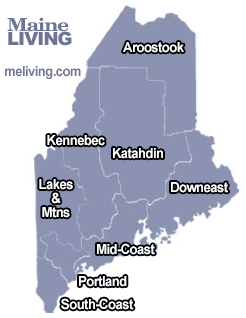Maine Maple Sugaring History
The History of Maple Sugaring and Production in Maine
Maine has a long history of Maple Sugaring going back to the Native American tribes of the Northeast. Up until the 1800’s, Maple sugar was the primary form of sugar used in the United States. Once the sugar cane industry opened in the Caribbean Islands in the 1800’s, Maple syrup became a delicacy. As the demand for local and organic foods has increased, Maple syrup has grown in popularity as an organic and preservative-free option for sweetening. Ask us about ME Maple Producers or share your Maine Maple Sugaring comments. To feature your Maine Maple business, contact us.
History of Maple Sugaring – Maple Syrup Production
A Brief History of Maine Maple Syrup and Sugaring
The first people to make maple sugar were the Native American tribes of the Northeast, who used it as a flavoring for bread, stews, teas, and vegetables. Native Americans also traded maple sugar for other products they needed. The French and English colonists were delighted with the taste of maple sugar, and eventually, they learned the process of making it from the Native Americans. Maple sugar became the principal sweetener in North America. (Native Americans and colonists could not store maple syrup easily, so they used the dry form.) When cane sugar was introduced, New Englanders still preferred maple sugar because it was much cheaper and did not involve West Indian slave labor.
Once a staple of American life, the sweet products of the maple tree are now specialty items. Over the years, the price of cane sugar fell dramatically, and now cane sugar is the variety most Americans use every day. The popularity of Maple syrup keeps New England sugarhouses going. As anyone who has ever tasted it knows, genuine Maple syrup has a taste and texture that the imitations just cannot match. (In Quebec, cheap imitation maple syrup is called “sirop de poteau” or “pole syrup”, suggesting that it was made by tapping telephone poles. We couldn’t agree more.)
Production of Maple Syrup and Maple Sugar
When the weather conditions are right, sugarmakers will head into their stand of trees, usually called maple orchards or sugarbushes, in late February and begin drilling small holes into the trunks of their maple trees. If all goes well, a clear, slightly sweet liquid will slowly drip from the spiles into buckets or into a pipeline that will carry the sap to a central collection point.
The highest quality syrup is made from the freshest and cleanest sap. If not immediately tended, the sap will deteriorate and the resulting syrup will not meet maple connoisseurs’ high standards. Maine sugar shacks house huge evaporator pans fired by wood, oil, or gas to heat the sap to the boiling point. Billows of steam escape through a vent or cupola atop the shack, where the aroma travels on the air for all to enjoy.
It takes long hours and perseverance to produce Maine maple syrup worthy of the name. The boil-down process is especially tedious, continuing for hours in order to eliminate all water content from the sap. Once the boiling process is complete, the delectable golden brew is filtered and packed for distribution to eager consumers around the world. The Maine Department of Agriculture administers stringent quality requirements on the making and selling of Maine maple products.
Changes in Maple Syrup Production Methods
Because maple syrup is a natural product, the process of making it has changed little over the centuries. The main improvements have been in the materials used for collecting and boiling the sap. Native Americans had cut slashes in the trees and collected the sap in containers made of bark or hollowed-out logs. Colonists were concerned that slashing the trees with axes harmed the trees, and they began drilling small holes into the tree and inserting a wooden tube. The tube allowed the sap to flow out.
The process of collecting the sap with buckets was quite time-consuming. Over time, people began to use horses, oxen, or tractors to haul the sap to the sugarhouse. Most modern sugarmakers use plastic tubes to carry the sap from each tree to a central location. Plastic tubes also protect the sap from dirt and bacteria.
New materials have also made the process of boiling the sap more efficient. The Native Americans had used hot rocks to heat the sap. Colonists used wood fires and kettles made of cast iron, a material they had brought with them from Europe. In the late 1800’s, people began using flat-bottomed tin pans instead of iron kettles because they provided more even heat. Recently, many sugarmakers have replaced their wood-fired evaporators with ones that use oil.
Did we miss something? Add your update or comment.
Maine Maple Syrup
Maine Maple Products
Maine Maple Producers by Region

Discover Maine Maple Producers by region. Aroostook, Downeast, Katahdin, Kennebec, Lakes, Mid-Coast, Portland and South-Coast.
Aroostook ME Maple Producers
Fort Kent, Houlton, Presque Isle
Downeast & Acadia ME Maple Producers
Bar Harbor, Blue Hill, Deer Isle, Eastport, Lubec, Cherryfield, Machias
Katahdin & Moosehead ME Maple Producers
Bangor, Brewer, Greenville, Lincoln, Millinocket, Orono
Kennebec & Moose River ME Maple Producers
Augusta, Skowhegan, Waterville, The Forks
Lakes & Mountains ME Maple Producers
Auburn, Lewiston, Norway, Bethel, Farmington, Naples
Midcoast ME Maple Producers
Bath, Boothbay Harbor, Camden, Rockland, Brunswick, Belfast, Searsport
Greater Portland ME Maple Producers
Portland, Freeport, Yarmouth, Westbrook, Cape Elizabeth
South Coastal Maine Maple Producers
Biddeford, Kennebunk, Kittery, Ogunquit, Old Orchard Beach, Saco, Wells, York
History of Maple Sugaring | Maple Facts|
Maple Sugar Grades | Maple Syrup Storage
Pet Friendly Lodging | Personals
Maine Weddings | Explore Maine Towns








